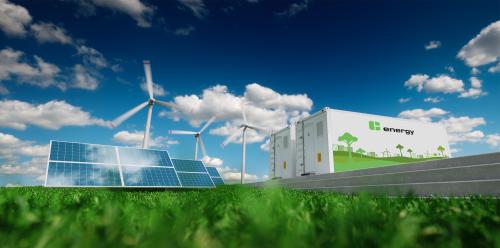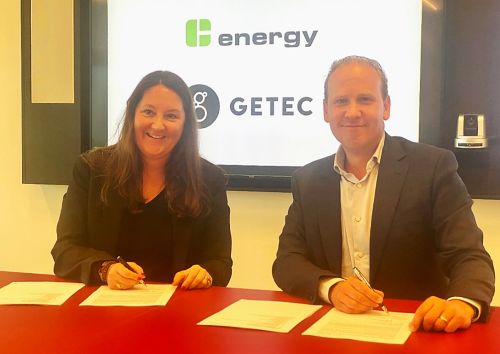Future-proof rfb technology boasts economical, ecological and safety advantages
C-energy develops new sustainable technologies and applications that provide an answer to the energy transition and all its accompanying challenges. These include aspects of energy management, storage, optimisation and trading. In order to further expand its offering towards achieving the global climate goals, C-energy entered into an agreement with DICP. “DICP is an authority in the research and development of Redox Flow batteries, and has extensive experience in cooperation with companies and technology transfer,” says Dany Bosteels, Out-Of-The-Box Manager at Cordeel Group who established the first contacts with DICP.
António Guterres, secretary-general of the UN, recently called for a ‘Global Coalition On Battery Storage’ during the launch of the World Meteorological Organisation’s State of the Global Climate 2021 Report. Guterres emphasised on the crucial role battery storage can play in tackling the global climate crisis. He advocates treating renewable technologies such as battery energy storage systems as essential and freely-available global public goods by removing obstacles to knowledge sharing and technological transfer, including intellectual property constraints.
"Battery storage of electricity will become crucial to further optimise the energy consumption of our customers. C-energy already offers lithium-ion batteries through its subsidiary C-battery, but will soon be able to complete this offer with Redox Flow batteries," states Niko Bonnyns, Project Director atC-energy. "The agreement with DICP comprises both the use of the existing basic technology and a research collaboration for the further development of this technology in order to optimally meet our project and customer portfolio."
Renewable sources and industrial applications
A Redox Flow battery consists of a stack where the battery power is determined (W) and a storage of electrolyte where the battery capacity is secured (Wh). In this project Vanadium forms the active component in the electrolyte.
Because power and capacity are decoupled, this type of battery is ideally suited for the storage and release of energy from renewable sources such as wind and solar farms, but also within industrial applications there are many benefits.
In the case of a solar panel system for example, on average there are typically 4 peak sun hours per day, often in the period with the lowest energy consumption, during which the battery is charged. The battery is then discharged during peak consumption periods. The same applies to wind farms; energy is stored during periods of high wind; and released when there is less wind, but still a large energy need.
Balancing the grid
This optimal distribution of storage and release plays a crucial role in making energy management more sustainable by aiming for grid stabilisation. The RFB technology in fact offers design freedom between power and capacity, making one less dependent on imbalances between renewable electricity production and electricity consumption. Because we are striving for more production of renewable energy and because this production is not always simultaneous with the consumption, it is important to invest in storage. This type of storage is also extremely future-proof as, when there is a demand for higher capacity, the volume can be scaled up by making more electrolyte available.
Economic, ecological and safety advantages
The RFB technology is fully complementary to that of lithium-ion batteries but offers some important advantages. The cost per cycle is significantly lower than with lithium-ion batteries and they offer a longer life span up to 25 years. From an ecological point of view, there is also a great added value. Redox Flow batteries can be recycled more easily and the mining process is secured in the long term because the basic raw material is available in greater quantities in the earth's crust than lithium. And in terms of safety, Redox Flow batteries have the upper hand because there is no risk of fire. The only challenge is that RFBs need a little more space but this can be designed in a perfectly flexible way to suit the application.
With this partnership, C-energy and Cordeel Group again express the realisation of their mission 'Building a passionate CO-2 free future'. This project, including the planned in-house assembly of the batteries, and further extensive investment in R&D, also in the long term, confirms their ambition as European players to make an active contribution to the energy transition. The group's ambition is to use logistics centres as energy hubs in the future and to offer a total approach towards obtaining a sustainable cradle-to-cradle future.
Minister of Energy Tinne Van der Straeten : “Electricity storage is a key element in the Belgian energy strategy. With our ambition to quadruple our offshore wind capacity in the North Sea by 2040, we will need flexible capacities such as batteries to balance the grid and compensate for fluctuations of wind and solar energy. Renewable energy is good for everyone: for the wallet and for the planet. But it is also a job-creating opportunity and a major asset for the influence of Belgium abroad via innovation and know-how.”









